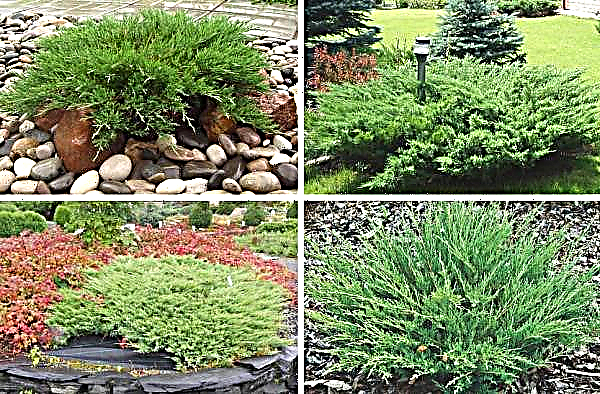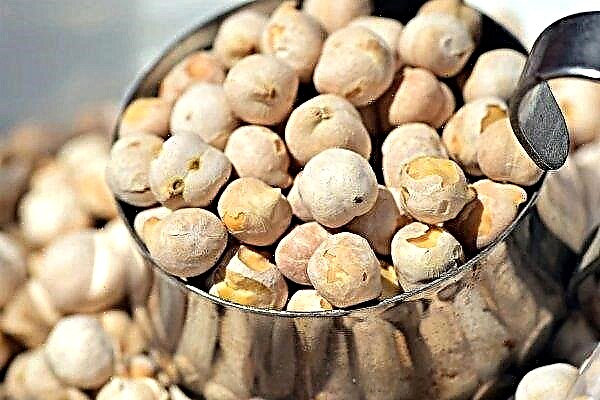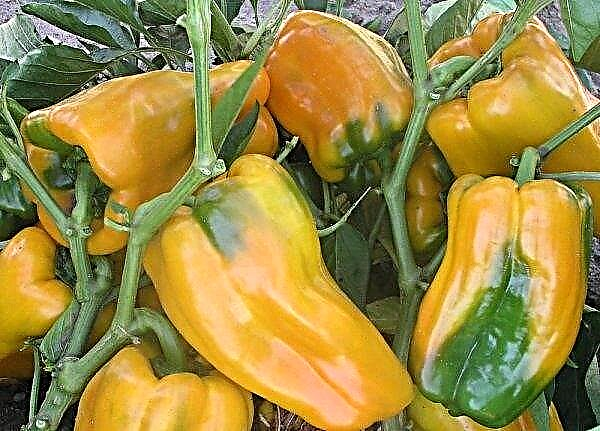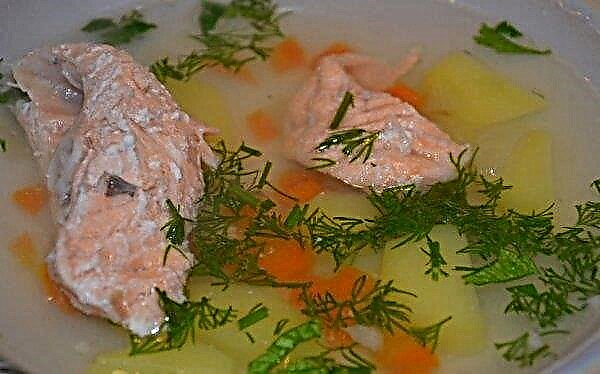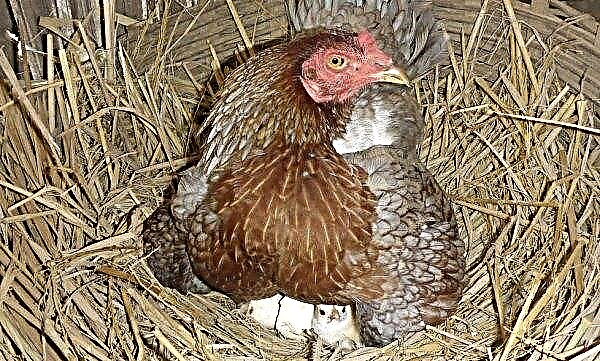One of the most popular vegetables is beets. People grow table varieties of this vegetable and technical (sugar and feed). Without red beets, it is impossible to cook delicious borsch, vinaigrette or herring under a fur coat, and sugar is made from sugar-containing varieties. In this article we will consider the reasons for the poor growth of this crop and how to eliminate them, as well as the better to fertilize root crops.
Why beets do not grow or grow poorly
Beets will grow poorly if:
- the crop was sown too late, without observing the optimal sowing dates;
- the sowing was carried out in dry soil, without additional moisture or preceding the sowing of rain;
- natural or artificial irrigation was not carried out during the period from germination to the appearance of 3-4 true leaflets on plants;
- the soil is too acidic and heavy;
- the predecessor culture was still the same beets or plants belonging to the families of cactus and cruciferous;
- plant growers neglect measures of protection and prevention from diseases and pests.

Violation of conditions
Beets grow a large mass of roots and leaves, so it consumes a lot of water. The bulk of the crop growth occurs in July and August, when water reserves in the soil are reduced, and high temperatures usually increase its deficit. The distribution and amount of precipitation during the growing season are of great importance. Spring drought is also dangerous and prevents the emergence of seedlings. Summer droughts, in turn, reduce the increase in the mass of root crops and their quality. Irrigation of beet plantations is an important factor in stabilizing yields.
Culture requires high light intensity during the growing season. A rainy summer is accompanied by a deterioration in light intensity, so plants grow worse. Moisture helps to increase the mass of roots and leaves, but the sugar content in root crops decreases. A high root crop with high nutritional value is obtained in years with optimal rainfall in June, July and August, but only if warm and sunny weather is restored after rains.
Wrong site selection
Soils intended for beets should not be clay and dense, good hygroscopicity is important. If the arable layer does not have uniformity and friable structure, then this is an obstacle to root growth. It is also bad if the humidity in the open ground is too high, and this happens in marshy areas or is caused by improper tillage.
Did you know? Scientific studies have shown that a high level of unique antioxidants and anti-inflammatory drugs found in beets helps reduce the risk of many types of cancer.
Crop rotation violation
Crop rotation is the sequence of growing crops in a particular garden or field. Properly organized crop rotation is the basis of crop yields, provides increased soil fertility and biological activity, limits the occurrence of diseases, the appearance of pests and weeds, and ensures the full use of nutrients from the land. Also, crop rotation is aimed at protecting the soil from erosion and reducing the leaching of nutrients, especially nitrogen, into groundwater, so it is necessary that the land is covered with rich vegetation throughout the growing season.
In a crop rotation, at least a four-year rotation cycle is applied. This means that the same species of plants and even another species from the same botanical family should not appear on the same field earlier than after 4 years.
- As precursors for beets are recommended:
- cereals;
- corn;
- clover and alfalfa;
- onions, leeks;
- cucumber, tomato and salad;
- peas, vetch, beans, beans;
- phacelia;
- mustard, radish;
- spinach.
Important! Vegetable growers need to remember that bean and grain crops, pumpkin plants and onions of any kind are good precursors to sugar and table beets.
- Beets are not suitable as predecessors:
- sugar and table beets;
- cabbage, cauliflower, broccoli;
- rapeseed, turnip;
- radish; radish;
- rhubarb and carrots;
- parsley;
- potatoes.
Diseases and pests
The main diseases of beets are:
- Beetroot Mosaic - Symptoms occur within a few days after infection by changing the color of the leaf edges and the appearance of irregular green spots. Infected tissues do not develop normally, and, alternating with healthy tissue, the leaves become mosaic. This viral infection is transmitted by aphids.

- Rhizoctonia - the causative agent is an imperfect mushroom Rhizoctonia solani. The disease occurs at all stages of the growing season. If the plants are infected at an early age, then the crop completely disappears. Adult diseased plants survive, but grow poorly. In some cases, the ribs of the leaf turn yellow, and necrosis appears. The leaves of diseased vegetables are small, upright, sluggish. The roots are conical in shape and form a “beard” of lateral roots. The inside of the root is destroyed, black necrotic tissue appears.

- Bacteriosis - a bacterial burn caused by the bacteria Bacillus mycoides Flugge and Bacillus mesentericus var vulgatus Flugge. This disease manifests itself at the stage of growth from 4 to 6 true leaves. Symptoms are brownish-black spots surrounded by a dark halo. In some cases, the affected tissue dries and crumbles, and the leaf plate becomes full of holes. The bacterium is transmitted through infected seeds, and also hibernates on the remaining plant debris in the soil after harvesting.

- Mycoses - the cause is Phytium mushrooms. The disease is carried by the wind and is dangerous until the plants form the first two pairs of true leaves. The disease looks like small watery spots on the stems. The infected area becomes thinner, and then blackens and rots. Plants fall to the ground and soon die, resulting in gaps in the culture.
- Peronosporosis - fungal disease, outbreaks of this disease occur in rainy years and produce crop losses of up to 15% of the total. Affected leaves remain small, deformed, fragile and dry out. In autumn, the disease can be observed on the leaves in the center of the outlet. On their upper part, discolored spots appear, accompanied by a purple fringing. Mushroom spores are transmitted through contaminated seed material.
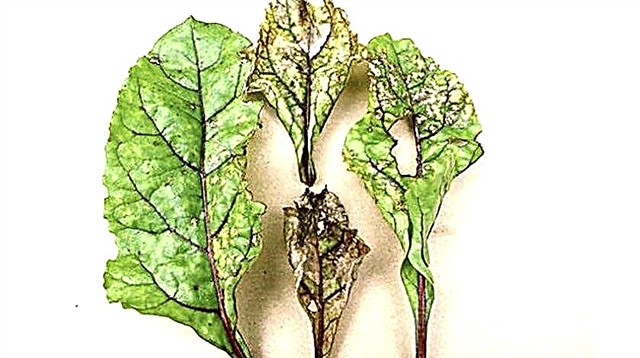
- Zone spotting or leaf fomosis - caused by Phoma betae A.B. Frank On diseased vegetables, the leaves of the rosette fade and become covered with large brown spots; on the roots, the disease causes rotting. The fungus remains viable in plant debris, on the surface of the soil, and in infected seeds.
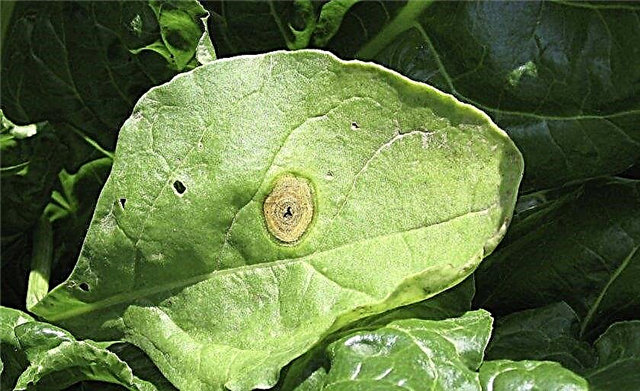
- Beetroot rust - the causative agent is the fungus Uromyces betae. The disease is quite frequent and appears at the end of the growing season. Yellow spots appear on all leaves. Later, orange bulges appear on the underside of the leaves. Starting in August, the disease goes into the next phase, manifested by the appearance of brown spots. By autumn, brown spots change color to black, after which the diseased leaves become dry and brittle.

- Cercosporidosis - the cause of the disease is the fungus Cercospora beticola. This is the most common beet disease. The fungus appears on crops at the end of June; yellow, round spots appear on the leaves. The disease develops and the spots turn gray with a brown-red ring around the edge. The spots are initially single, and then increase in size, combine and cover large areas of the sheet plate. The affected tissue dies and crumbles, and the leaves become perforated.

- Nematodes (Heterodera schachtii) - reproduce with a frequency of two generations per year, prefer plants of the haze family, since they provide them with optimal conditions for development. An attack on beets usually occurs in late June. Root crops infected with a nematode do not grow well, their leaves turn yellow or die, and the underground part is small and forms numerous secondary roots.
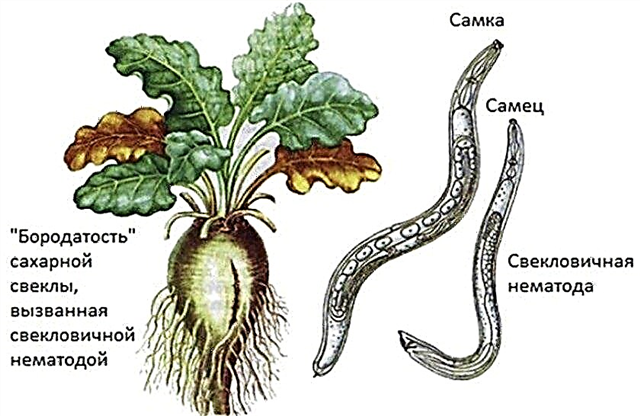
- Beet bug (Poecyloscytus cognatus) - develops one generation a year and lays eggs in various areas of the stems. This is a multiphase type of insect, which is the main pest of sugar beets. After the attack of bedbugs, the vegetable tissue dries quickly, and in addition, phytopathogenic organisms develop in the wounds inflicted by insects.
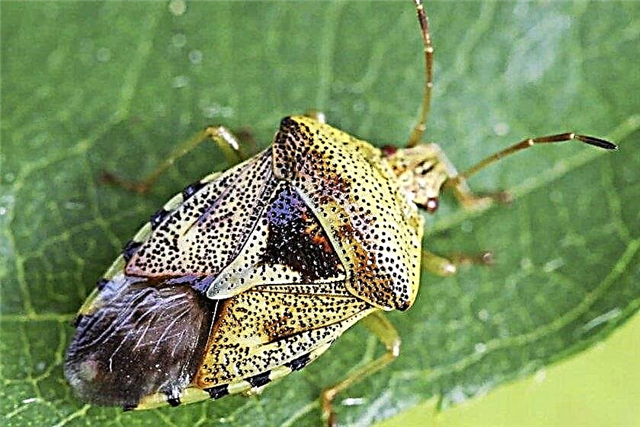
- Beet black aphid (Aphis fabae) - This is a migratory species of insects, developing several generations a year, each of which lays eggs. The insect attacks more than 200 species of plants, including sugar beets. Insects colonize the leaves and feed on their juice, which is why the plant develops weakly and slowly. In addition, aphids serve as a carrier for many viruses.
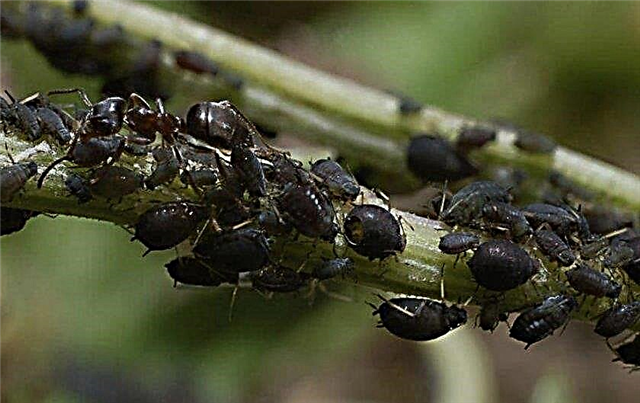
- Beet root aphid (Pemphigus fuscicornis) - insects produce about eight generations a year, females or eggs winter in the soil at a depth of 20 to 100 cm, preferring dry and warm places. Root aphids are dangerous for many plants belonging to the Chenopodiaceae family. Adults and larvae feed on root sap. After colonization by the root aphid, the leaves of the vegetables dry out and the roots rot. In addition, crops become weakened and can be easily attacked by phytopathogenic agents.

- Beetroot weevil (Bothynoderes punctiventris) - develops one generation a year and hides in the soil at a depth of 20 to 25 cm. This is one of the most dangerous pests of sugar beets. Larvae and adults attack young beets in the cotyledon phase, which they eat to the ground. One weevil can destroy 10-12 plants per day. After the formation of the first pairs of true leaves, adult weevils can no longer completely destroy the culture, but gnaw cavities in the roots, as a result of which the affected plants wither, and the root forms many additional small roots. The roots affected by the weevil are less developed and yield a poor quality crop.
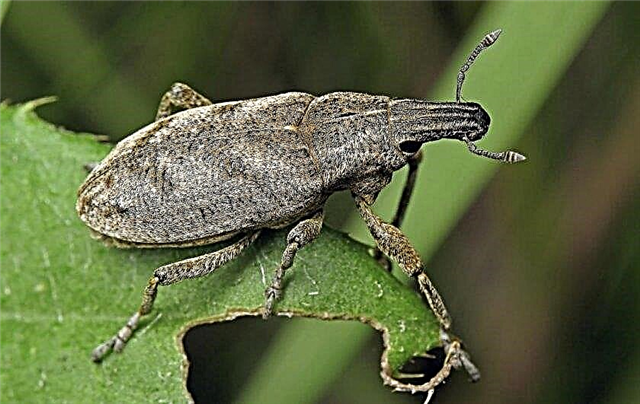
- Beetroot Flea (Chaetocnema spp) - this species produces 2-3 generations per year, adult insects winter in the surface layer of the soil or under plant debris. The invasion of beet flea leads to great damage to fodder and sugar beets. Destroy the plants in the cotyledon phase or before the presence of two pairs of true leaves. Damaged tissues die, vegetable growth slows down, and photosynthesis decreases. Especially a flea damages beet crops in dry years.
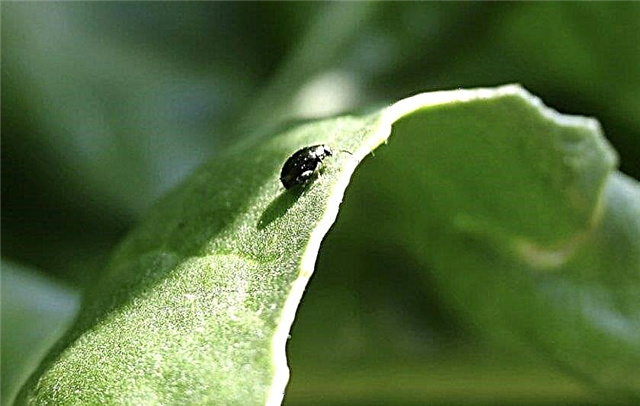
- Beet Mining Moth (Scrobipalpa ocellatella) - This insect reproduces at a frequency of 3-4 generations per year. Young insects develop in the form of a larva on beet residues left after harvesting or on stored roots. Larvae feed on young leaves, make passages in the petioles or in the rhizome. The inner passages are covered with the remains of insect feces. Infected plants lose their leaves, beets grow small, and the total yield from infected plantations decreases several times.

- Beet Mining Fly (Pegomyia hyoscyami) - develops two generations a year and larvae lays in the surface soil layer. Adult insects are not harmful to crops, but the larvae penetrate the leaves between the epidermis, the upper and lower layers, where they consume epithelial cells. The pest is very dangerous when the plant has less than eight leaves. Sick leaves are full of excrement, and the ability of beet photosynthesis is reduced.
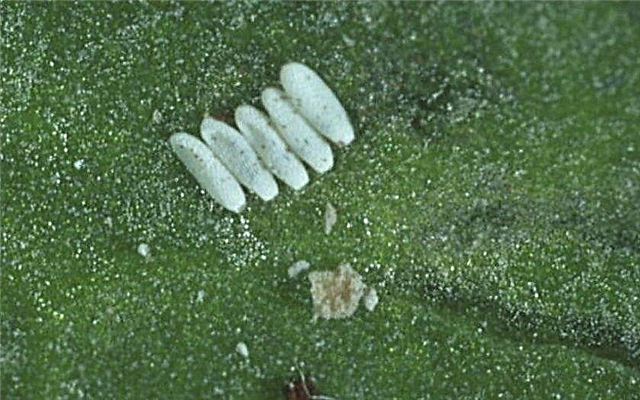
What to do and how to eliminate the causes
To successfully grow root crops, it is necessary to observe the correct timing of sowing in open ground, apply balanced fertilizer to the beds, and also provide the soil with moisture. Also, to obtain a good crop of vegetables, the type of soil and its structure are important.
Did you know? The result of human beet consumption is: lowering blood pressure, preventing oncology, cleansing the liver, treating anemia, increasing stamina and increasing libido. The root crop also helps in skin care, prevents the occurrence of cataracts, creates immunity and treats respiratory diseases. The healing properties of the vegetable are due to the richness of nutrients, vitamins and minerals.
Recovery of optimal conditions
Beetroot is a plant of temperate climate, the seeds of which are best germinated at a temperature of +15 ... 18 ° C. It is sown later than other root crops. In a situation where the temperature during seedlings is kept for more than 10 days below +10 ° C, beets in the future will not grow root crops, but will eject seed inflorescences.
Young green shoots are not afraid of a short-term drop in temperature even to 0 ° C, but are sensitive to more severe frost and can freeze. Freezing is also undesirable during the harvesting of root crops, because it reduces storage time. During the vegetative period, it is necessary several times to carry out work on weeding row spacing. During this procedure, weeds are destroyed between the rows and the soil is loosened, through which moisture and air penetrate the roots of the plants. If there is nothing to water root crops - watering can be replaced by loosening the soil.
During the vegetative period, it is necessary several times to carry out work on weeding row spacing. During this procedure, weeds are destroyed between the rows and the soil is loosened, through which moisture and air penetrate the roots of the plants. If there is nothing to water root crops - watering can be replaced by loosening the soil.
Watering mode
Beet seeds are very sensitive to soil moisture, so it is advisable to water the crop. Moisture is necessary for her during the period from sowing seeds to the rooting of young plants, until 2-3 true leaves appear on them. Later, beets form a deep, highly developed root system, so it suffers a fairly long temporary drought.
Proper fertilization
Beetroot, due to its highly developed and deeply penetrating root system, is ranked among vegetables with average fertilizer requirements. Most of all, she needs nitrogen and potassium. Beets are sensitive to a deficiency of boron, which is manifested by a gangrene rosette of leaves and the appearance of dry root rot, it also needs manganese and molybdenum. On green beet plantations, it is necessary to use nitrogen fertilizer sparingly, since too high a concentration of this element in the soil leads to a high nitrate content in root crops. Rhizomes of too large sizes are tied, their color changes unnaturally, their taste and intact qualities deteriorate. If there is a need for nitrogen fertilizer, it is best to fertilize the field or bed before sowing seeds, this will partially limit the accumulation of nitrates in the product.
Organic fertilizerDid you know? Beetroot juice is one of the richest dietary sources of antioxidants and natural nitrates. Nitrates (not to be confused with nitrites!) Are compounds that improve blood flow throughout the body, including the brain, heart, and muscles.
First of all, organic matter should be used, since it is a fertilizer of natural origin that improves the physical, biological and chemical properties of the soil. It is best to use cattle manure or compost where there is everything that is needed for the soil: they improve its structure, stimulate biological soil life and provide useful minerals. Organic fertilizers that can be used for growing beets:
Organic fertilizers that can be used for growing beets:
- granular, dry or fresh manure (beet, due to its high tendency to accumulate nitrates, should be grown in the second or third year after fertilizing);
- compost;
- liquid or green manure;
- humic fertilizers
- powder additives (from volcanic basalt, granite or sedimentary clay rocks).
Recipe for liquid garlic solution
Take 1⁄4 bucket of garlic. You can take garlic plants with green stems, inflorescences, immature or ripe bulbs and roots. Everything is well crushed and filled with water so that it is several centimeters below the edge of the bucket. A bucket of contents is left for several days in a shady place for fermentation.  When garlic begins to ferment, it needs to be mixed regularly. When the bubbles no longer appear on the surface, this means that the liquid garlic fertilizer is ready to use. Before use, the solution must be filtered through gauze.
When garlic begins to ferment, it needs to be mixed regularly. When the bubbles no longer appear on the surface, this means that the liquid garlic fertilizer is ready to use. Before use, the solution must be filtered through gauze.
Mineral fertilizerImportant! Garlic fertilizer before use should be diluted in a ratio of 1:10 (1 part concentrate to 10 parts water). The garlic solution is poured directly onto the soil so as not to wet the leaves of the beets. If fertilizer gets on the leaves, it can cause burns.
The number of doses of mineral fertilizers should be used rationally and carried out as an addition to organic fertilizer, preferably based on a chemical analysis of the soil or a visual analysis of the crops. Beetroot is a vegetable dependent on chlorophyll, therefore, it is recommended to use preparations containing this ingredient. Mineral fertilizers can be used both before sowing and for plant nutrition. Application Rules:
Application Rules:
- Acidity (pH) of the soil - the correct soil reaction, which for beetroot is in the pH range of 6–7.5, largely determines the corresponding supply of nutrients. The acidity of the earth can be measured using a suitable soil pH meter. If the pH is too low, the soil should be calcified using calcium fertilizer. However, root crops cannot be grown immediately after liming; therefore, this procedure should be carried out well in advance, preferably one year before sowing or for a predecessor culture. On poor magnesium soils, it is recommended to use lime containing magnesium. This substance prevents the absorption and accumulation of heavy metals by root crops. Calcium has the same properties, it limits not only the accumulation of heavy metals by vegetables, but also the excessive accumulation of nitrates. But if the pH in the soil is too high, you can acidify the soil using sulfur, acid peat (chopped or compost), bark of coniferous trees, nitrogen fertilizers with sulfur (ammonium sulfate).
- One-component fertilizers are introduced when, based on chemical or soil analysis, a deficiency in one of the nutrients is detected. Due to the tendency to accumulate nitrates, special attention should be paid to the proper use of nitrogen fertilizers. Urea form nitrogen is best used because it limits the accumulation of nitrates in plants.
- Multicomponent fertilizers - microelements are recommended to be used when it is not possible to introduce organic fertilizers, such as vermicompost, compost and manure.
Did you know? Beet roots and greens are an excellent source of folate, vitamin A and K, as well as a very good source of manganese, copper and potassium. Also, these root crops have a high fiber content, which contributes to the rapid saturation of a person and the appearance of satiety.
Pest and Disease Control
- Proper preparation of the field for the cultivation of beets increases the chances of a successful cultivation. Of great importance is also the removal of the remnants of the predecessor culture and deep plowing of the soil. All equipment used for growing beets must be clean and must be disinfected before each use. It is also very important to use a seed fund obtained from a trusted source.
- There are many varieties of beets on the market that are disease resistant. It is rational to grow just such varieties.
- It is necessary to avoid planting crops belonging to the cruciferous family on the same field more often than after 3-4 years. This significantly reduces the incidence of beet root rot and reduces the likelihood of pests.
- It is also necessary to maintain suitable soil moisture on the beds. Excessive moisture has a huge impact on the incidence of almost all fungal diseases. It is very important to maintain the correct time for sowing and harvesting beets, removing them from the plantation. Processing grown vegetables with special drugs will slow down the spread of pathogens along the shoulders.

Did you know? Beets support the process of removing toxins from the human body. The betalin compound, which gives the vegetable a red color, helps to capture and leach toxins from the body along with urine.
Useful Tips
Following the recommendations, you can avoid many mistakes and grow a tasty and healthy vegetable without problems:
- Locate beet beds where they will receive at least 10 hours of direct sunlight.
- The soil on the bed for beets should have a pH of 6.0 to 7.5, it is also necessary to remove all large and small stones from the soil of the future beds.
- Sow the seeds to a depth of 2 to 2.5 cm and observe the distance between the rows in the range from 30 to 45 cm. At the same time, maintain the distance between the seedlings from 5 to 15 cm. To grow giant root crops, the distance between the plants is increased. For example, subject to a distance of 30–35 cm between seedlings of fodder beets, root crops the size of a child’s head can be grown.
- For better root quality, it is necessary to keep the soil moist during the growing season.
- Since the seeds of the culture have a hard coating, it is necessary to soak them in warm water immediately before sowing and soak in it for several hours. This will increase the chances of seed germination.
- Each beet seed has several seeds. This will result in several seedlings from each planted seed. After the appearance of 3-4 true leaves, it is necessary to thin out and leave only the strongest plants from the bunch of sprouts.
- Young beets are often attacked by pests, so root crops growing on small beds can be manually covered with cut plastic bottles, placing them with the open neck up, and left in place until harvest.

By observing the crop requirements for cultivation, you can get good beet crops. For this, vegetable growers need to conduct timely sowing of seeds, to provide watering, weeding and processing of root crops from diseases and harmful insects.Did you know? Raw beets consist of 87% water, 10% carbohydrates, 2% protein and less than 1% fat. 100 g of this root crop contains 43 calories.
















